#Levivot
Explore tagged Tumblr posts
Text
Janucá, la fiesta judía de las luces
🇪🇸 Janucá, conocida como la fiesta judía de las luces, es una de las festividades más importantes y alegres en el calendario hebreo. Cada año, los judíos celebran esta festividad desde el 26 de diciembre hasta el 2 de enero. La celebración conmemora un milagro histórico ocurrido en el año 165 a.C., cuando los judíos lograron recuperar el Templo de Jerusalén y se encontraron con solo un poco de aceite para encender la menorá, el candelabro sagrado. Este aceite, milagrosamente, ardió durante ocho días, lo que es el motivo central de la festividad. Durante los ocho días, los hogares judíos encienden las velas de la janukiá, un candelabro de nueve brazos. El shamash, la novena vela, se usa para encender las demás. A lo largo de la celebración, se comparten momentos familiares y se realizan actividades como el juego del dreidel (sevivón), y se disfrutan alimentos fritos como los levivot y sufganiyot (buñuelos). Janucá también es un momento de reflexión espiritual, donde la luz de las velas simboliza la esperanza, la resiliencia y la lucha contra la opresión. Este año, la festividad comenzará la noche del 25 de diciembre, coincidiendo con la Navidad, un recordatorio de que tanto la esperanza como la luz pueden trascender cualquier oscuridad.
🇺🇸 Hanukkah, known as the Jewish Festival of Lights, is one of the most important and joyous holidays in the Hebrew calendar. Every year, Jews celebrate this festival from December 26 to January 2. The celebration commemorates a historical miracle that occurred in 165 BCE, when the Jews recaptured the Temple of Jerusalem and found only a small amount of oil to light the sacred menorah. This oil, miraculously, burned for eight days, which is the central theme of the holiday. Over the eight days, Jewish homes light the hanukkiah, a nine-branched candelabrum. The shamash, the ninth candle, is used to light the others. Throughout the celebration, families share moments together, play the dreidel game (sevivon), and enjoy fried foods like levivot and sufganiyot (doughnuts). Hanukkah is also a time for spiritual reflection, where the light of the candles symbolizes hope, resilience, and the fight against oppression. This year, the holiday begins on the night of December 25, coinciding with Christmas, a reminder that both hope and light can transcend any darkness.
#Janucá#FiestaDeLasLuces#Esperanza#Resiliencia#Antisemitismo#Luz#Reflexión#Menorá#Shamash#Dreidel#Levivot#Sufganiyot#Espiritualidad#Tradición#Familia#Navidad#CulturaJudía#OchoDías#Milagro#Jerusalén#judaísmo#judaism#jewish#judío#cultura judía#jumblr#judíos
3 notes
·
View notes
Text

Crispy Vegan And Gluten Free Potato Latkes
#hanukkah#sides#savoury#jewish#eatingbyelaine#glutenfree#gluten free#potato#potatoes#latkes#levivot#potato pancakes#potato fritters#potato cakes#food#recipe#recipes#tasty#delicious#food photography#vegan#veganism#vegetarian#plantbased#plant based
5 notes
·
View notes
Note
Hello hello, sending hugs as always!
I was hoping you maybe be able to give me some inspiration for a small series of food photos I'm assembling for Channukah! I'm doing an 8 part series celebrating the different groups within Judaism to 1. Be loudly and proudly Jewish at this current time, and 2. raise awareness for non-ashki Jews. In the UK it's super hard to find many non ashki peeps which makes it hard to chat to people about other classic Channukah foods, but I was wondering if you knew of any particularly good ones (that aren't latke or sufganiyot)? Would hugely appreciate any suggestions you have!!
Hi darling, sending you the biggest hugs right back! <3
Oooh, Hanukkah foods! I'm not gonna lie, some of my fave Jewish foods come from this holiday. With your permission, I'll give a small introduction, just for anyone reading, who might be unfamiliar with Hanukkah, and curious... and also talk about some of the lesser known Hanukkah food traditions among European Jews, too.
So during Hanukkah, we celebrate a miracle that happened with the oil at the Temple in Jerusalem. After the Jews defeated the occupying Greek forces that had desecrated our Temple, we wanted to light again the eternal flame of the Menorah (the Temple candelabra) with olive oil, but after the destruction caused by the Greek forces, there was only enough left for one day, and it would take 8 days to get more oil. The miracle is that somehow, that small amount of oil lasted for the whole 8 days, meaning the light didn't go out again. To remember this miracle, we eat food fried in oil! Being Jewish is so good for your health. XD
In shops and bakeries around Israel, there are already sufganiot being sold. They are YUMMY, and while some people call them "the Jewish donuts," I can say that after having eaten American donuts, I def think sufganiot are way yummier (in part 'coz they're not as "heavy" because the dough it's made of is fluffier? More... airy? Not sure how to say it, but I hope you get the idea). Also, you don't get robbed, because someone made a hole in the middle of the sufgania, taking out nearly half of it. The traditional type has strawberry jam injected inside, and sugar powder on top, but in Israel there are some crazy fancy kinds, and every year they seem to become more extravagant.
Traditional sufganiot (you can see a bit of the jam on top, but half the fun is biting and getting to the "treasure" of lots of jam at the center of the sufgania):

Fancy sufganiot:
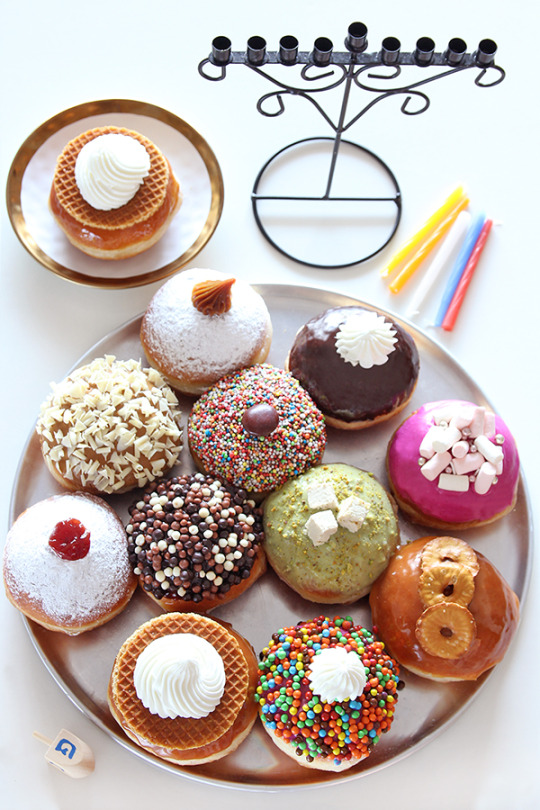

Then there's the latkes, or as they're called in Hebrew, levivot. They're like savoury pancakes made out of potatoes, and obviously they're fried in oil.
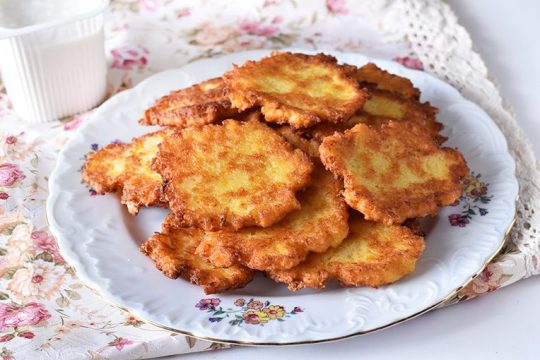
In many Jewish communities, there was a custom of giving kids special pocket money for Hanukkah. In Israel, this "money" is given in the form of chocolate "coins." I freaking loved this as a kid! It was fun unwrapping the "coins," eating the chocolate, and then (assuming I was careful when peeling them off), make a collection of the different "coins," or just play with the wrap.

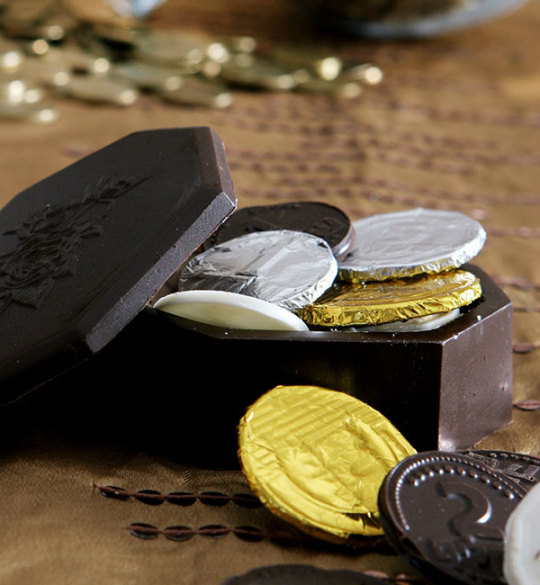
Greek Jews used to make a bread from potatoes and yogurt:
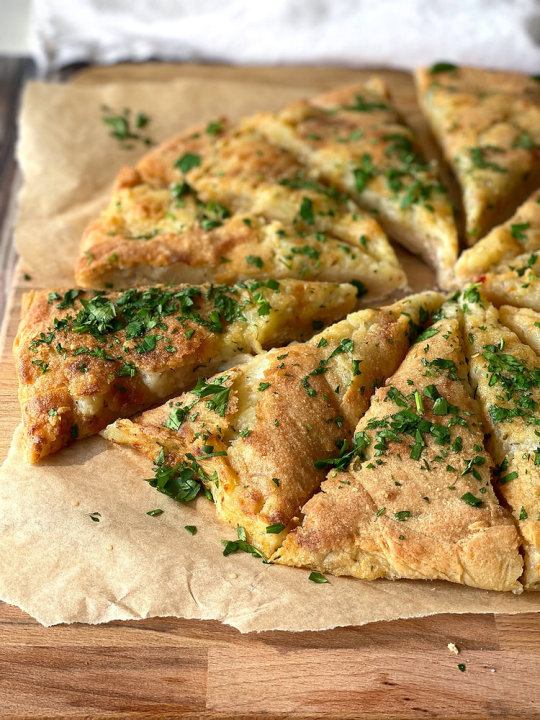
Georgian Jews made levivot out of corn flour (sometimes filled with cheese), or out of potatoes AND nuts, giving it the shape of a big omelette. Here's the corn flour version:

Czech Jews had a custom saying goose is the best meat, so for Hanukkah, they often ate goose related dishes. For example, they would make levivot from potatoes, eggs, sugar, lemon and goose fat.
French and Swiss Jews would make levivot out of apples.

The Jews of Iraq, Algeria and Buchara (which is in Uzbekistan) used to put the Hanukkah pocket money for the kids inside honey cakes. In Algeria and Buchara they also sometimes made levivot with meat added inside.

The Jews of Romania and Austria used to light potato Hanukkah candles! This was likely because they were so poor. Still, a pretty cool thing, when you can light your candle, and eat it (or at least a part of it), too.

In northern Africa, Jews used to make a type of cookie called Debla (sometimes nicknamed "dough roses"), which originated in Libya. They're usually eaten with a sweet syrup. It's more of a Purim dish (the equivalent of Hamantaschen), but was sometimes prepared for Hanukkah as well. Traditional Debla:
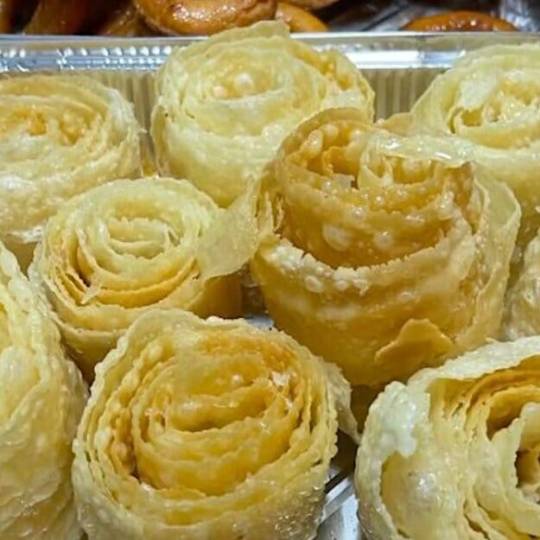
And a slightly "fancier" Israeli version:

Okay, maybe my fave Hanukkah dish! It's called sfinge (the 'ge' is pronounced like in "sponge"), and it's basically the Moroccan sufgania, which later became popular among Tunisia and Libya Jews, too. It can be round with a hole in the middle, it can be in the shape of a ball, while Libyan Jews make it flat. It's eaten with either honey or sugar powder, but again, in Israel fancier versions developed... I'm not a great cook, so IDK to explain why, but it's even fluffier than the sufgania, and that's why it's my personal fave.
Traditional sfinge with honey:
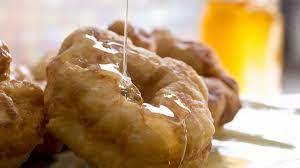
With sugar powder:
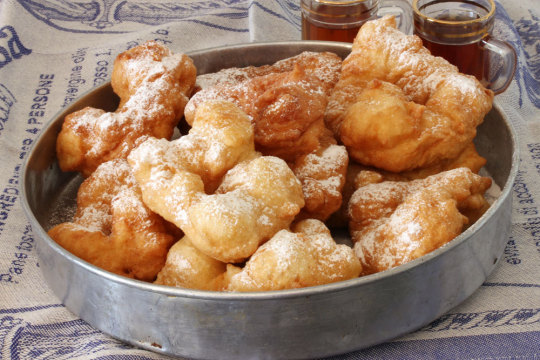
Israelis always having to make everything fancier:

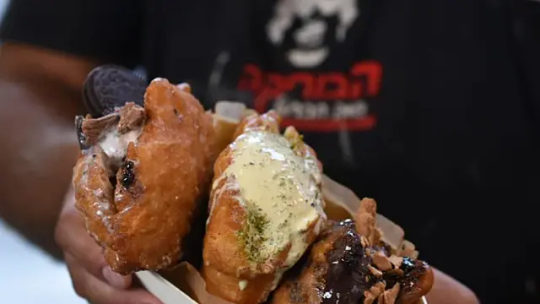
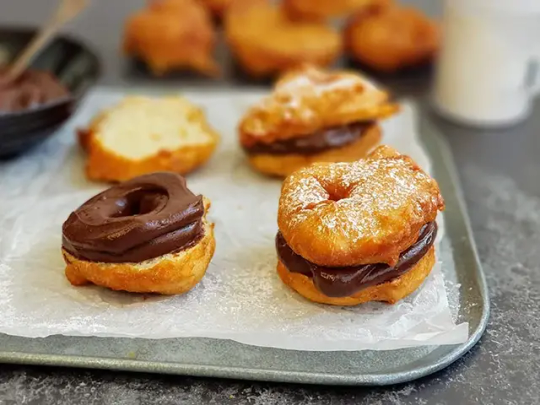
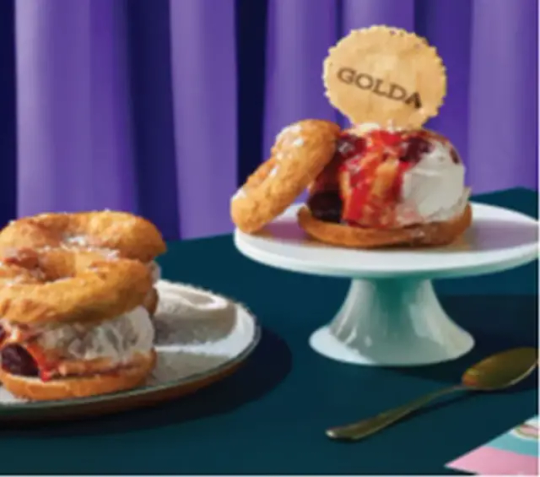
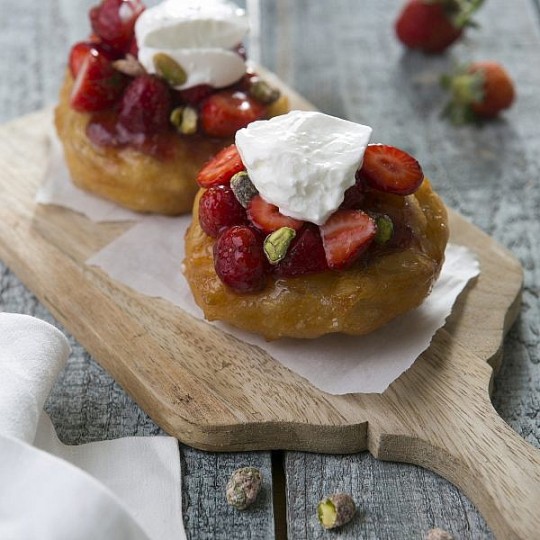

They even made a savoury version of flat sfinge...

I hope this helps! Have a wonderful day, darling! xoxox
#judaism#jewish#jew#jumblr#frumblr#ask#classical-memeician#jews#jewish stuff#hanukkah#jewish history#jewish food#foodgasm
357 notes
·
View notes
Text
Cataloguing the Hanukkah party lineup we had so I can find these recipes later (hopefully next year)!:

And note to self to use these spices for the keftes:
I also used shitty normal store-bought sandwich bread which perhaps made the resultant keftes too soft? But also pleasantly soft on the inside. Either way that bread absorbed water like a sponge and the resultant mixture was very damp. But I did also use panko instead of matzo meal, which perhaps does not absorb water so well.
7 notes
·
View notes
Text
This time of year, I’m often thinking about latkes. As the days get shorter and colder, my main consolation is anticipating Hanukkah, and planning what to cook for gatherings with friends and family. I grew up eating latkes, as did my dad and grandparents, and it can feel like they have always been part of this time of year. But in reality, latkes are a new addition to Hanukkah.
The potato is native to the Americas and although it’s now essential to Ashkenazi Jewish and European foods, from kugel to vodka, it didn’t become a staple in Eastern Europe until the mid 1800s. This is true of many ingredients. Before the Columbian Exchange, Italian food didn’t have tomatoes and Indian food didn’t have hot peppers. With Hanukkah coming up, let’s dive into the history of how fried South American potatoes became a quintessential Jewish food.
One popular pre-latke Hanukkah food was cheese (a point for Team Sour Cream). The Book of Judith was associated with Hanukkah starting in at least the 14th century. In a commentary on the Babylonian Talmud from the Middle Ages, Rashbam wrote that just as Esther was primarily responsible for the miracle of Purim, Judith was primarily responsible for the miracle of Hanukkah. Her story actually takes place a few hundred years before the Maccabees were fighting the Seleucids, but in the oral tradition in the Middle Ages it was said that Judith was related to Judah Maccabee. The basic story is that Judith seduced the Assyrian general Holofernes and fed him salty cheese and wine. When he passed out drunk, she beheaded him with his own sword and the Israelites were able to defeat the Assyrian army. People in the Middle Ages ate cheese around Hannukah to remember Judith’s bravery.
The earliest written reference to fried pancakes (levivot in Hebrew) being served for Hanukkah comes from a 1322 poem by Rabbi Kalonymus ben Kalonymus that describes “levivot large and round, the whole size of the frying pan.” So there’s a historical reason to make extra-big latkes this year. Susan Weingarten connects this poem to a version of the Book of Judith copied in 1402 in Provence that says that Judith fed Holofernes fried cheese pancakes.
In the “Encyclopedia of Jewish Food,” Gil Marks traces the spread of ricotta cheese pancakes, which originated as a Hanukkah food in Italy and gradually spread through Europe. In Italy and Central Europe, olive oil and butter were common cooking fats, but in Eastern Europe, especially in the winter, schmaltz was easier to come by. Kosher law prohibits mixing meat and milk, so cheese pancakes evolved into being made with root vegetables like turnips or with rye or buckwheat flour. Once fried pancakes became meat dishes instead of dairy dishes, it was common to serve them with jam (a point for Team Applesauce).
As fried pancakes were becoming a widespread Hanukkah food, potatoes were spreading through Europe. It took some time after potatoes were brought over from South America for them to become a staple. People were initially wary of many new vegetables, including tomatoes and pumpkins. But because potatoes are nutritious, grow well in low-quality soil, and can be stored for long periods of time, they gradually spread across the continent. Potatoes went from being unheard of to being responsible for a quarter of the population growth in Europe between 1700 and 1900. In Eastern Europe, the tipping point to greater acceptance came with crop failures in 1839 and 1840 in Ukraine and Poland. To prevent a famine, people planted huge numbers of potatoes. They became such a staple that they were cheaper than flour, and potato latkes became the default they are today. The word “latke” itself comes from the Slavic “oladka” for a small fried pancake, from the Greek “elaion” for olive oil, and came into use by the mid 15th century.
As latkes moved to America along with waves of Eastern European Jewish immigrants in the early 20th century, the default cooking oil switched to neutral vegetable oil, a win for my personal Team Plenty of Both. This brings us to today – but the evolution of the latke isn’t necessarily over. There are plenty of modern recipes that incorporate other fried, shredded ingredients like zucchini, spinach and beets.
If you’re feeling particularly adventurous this year, you could try one of the oldest fried pancake recipes in recorded Jewish history. Ashishim are sweet, fried red lentil pancakes and there’s a recipe for them in the Jerusalem Talmud that dates from around 400 CE. Whatever kinds of latkes you fry up this year, hopefully the taste will connect you to history and the people you’re celebrating with, and also remind you that trying out new recipes and ingredients is part of a long tradition.
7 notes
·
View notes
Note
Latkes toppings (mad) from Israel:
1. Iraqi style-Amba sauce -pickled mango paste, Persia/N. India origin. Very savory.
2. Yemeni style- freshly pureed tomatoes and Zhouk (garlic and green chillies paste).
3. Georgian Style- satsivi and Tkemali.
4. Italki Style- fried cheese cakes (probably the Levivot mentioned by the sages of old).
Oh HECK yeah!!
Those all sound amazing,, 😯
Idk if you know nonny (or really anyone), has anyone tried samneh on latkes?
25 notes
·
View notes
Note
What do u prefer, sofganiyot or sfinjim?
Levivot!
But, if i had to choose out of the two, then sfinjim. Sofganiyot are messy and leave sugar powder everywhere, and don't taste as good
3 notes
·
View notes
Note
I just thought up an au/hc that I think maybe you'll like
Hanukkah in Buckkeep:
a chanukia in each window, half of them fanciful designs made by Lady Patience
sneaking to the kitchen for fresh sufganyot/levivot from cook Sara
the dining hall all singing Maoz Tzur together, Burrich quietly leading
Haha lovely idea. On that topic look at this url i have saved

6 notes
·
View notes
Text
I checked with some Israeli friends and apparently they do it too! considering I'm going to stay over at a friend's place I consider an older brother for the holiday and I'm the youngest in the house I may be bullied into doing it.
But they said in their household they make the youngest child eat the candles between two levivot like a sandwich. which idk if that makes it better or worse.
since i didn't grow up jewish and my younger sibling isn't converting, meaning im neither the oldest or youngest, do i have to eat the candles? or can i skip that part of the ritual?
434 notes
·
View notes
Text
Applesauce or sour cream?
#latkes#levivot#applesauce#sourcream#jewish food#food#judaism#ashkenazi jewish food#tw food#tw: food#tw#jumblr#hanukkah#chanukkah
57 notes
·
View notes
Text
Recipe: Levivot (Yeasted Dumplings)
Hello, lovely friends! I’ve been hard at work on my dissertation in recent months, which hasn’t meant much new content. But I have an ancient recipe for you today, based on the description in 2 Samuel 13. In the passage, Tamar prepares “two levivot” for her brother. While the term means potato latkes in modern Hebrew, the passage describes her boiling the dough and pouring the pot out through a colander, implying that these are boiled yeasted dumplings, akin to German Hefeklösse. Thus, I developed a recipe that uses common ancient ingredients to make them. They’re quite tasty!

Levivot (adapted for ancient ingredients from Hefeklösse) Makes 12 rolls
60g lukewarm water (1/4 cup) 57g date paste or well-mashed Medjool dates (1/4 cup) [1] 7g active dry yeast (1 packet) 57g fat, such as untoasted sesame oil or butter (1/4 cup) [2] 180g lukewarm water (3/4 cup) 6g salt (1 tsp) 395g whole wheat flour, ideally Einkorn (3 1/2 cups) [3]
1) Mix together the 60g water and date paste, then stir in the yeast. Let sit in a warm place for 5 minutes, until the mixture is very frothy.
2) In a large bowl, mix together the yeast mixture with all the remaining ingredients.
3) Using the kneading hook of a mixer, or your own arms, knead the dough for several minutes (at least ten if by hand). Add more water if necessary for a supple, tender dough. By the end of kneading, the dough should be stretchy and smooth.
4) Cover the bowl with a towel and let rise in a warm place for 1 hour, or until the dough is doubled in volume.
5) Punch down the dough and knead it a few times. Divide the dough into twelve equal portions, then shape each portion into round rolls. Space out the rolls on a large tray and let rise in a warm place for 30-45 minutes, or until very puffy.
6) Meanwhile, in a large pot, bring several inches of water to a boil. Reduce heat to a steady simmer.
7) When the rolls have risen, use a slotted spoon to lower six of them into the water, one by one. Cover, return to a simmer, and simmer for 10 minutes. Do not remove the lid while cooking. When done, the rolls should be firm to the touch. Remove with a slotted spoon, and repeat with the remaining six rolls.
8) Serve warm, with butter and optional honey.
Notes:
[1] You could use more refined sugar or honey, although it’ll make the cakes more sweet. Dates were the major source of sweetness in recipes in the ancient Near East.
[2] In Mesopotamia, sesame oil was probably the most common fat used in baking. Animal fat (like lard or ghee) could be used as well, but was more rare. Olive oil was commonly used for illumination, but it’s debated whether it was used for food in Israel, as it can be quite bitter; regardless, if you use it for this recipe, be sure not to use Extra Virgin oil, which will impart a strong flavor.
[3] The primary grains for bread in the ancient Near East were barley, emmer wheat, and einkorn wheat. Einkorn wheat flour is now widely available under the Jovial brand, but regular whole wheat flour works well too. For a prince’s meal, fine sifted wheat flour would have been used; you can replicate this by replacing some of the whole wheat flour with white flour.
113 notes
·
View notes
Text
Come have a whole latke of fun with Cap-IM’s Community Gifts!
This has gotta Maccabee our favourite time of year! We’re levivot-ing with joy (and maybe also from the sugar content of eating too many sufganiyot) about all the gifts that we’ll get to unwrap later, and want to invite you to join in the fun.
We see you rollin’ - but don’t be gambling on having lots of time later! Get off to a good starch and create those community gifts now.
The prompts this year are almost as delicious as chocolate coins and there are lots of them; whichever letter you land on will make for great inspiration! It’s time to light that flame of motivation and have a great eight days of gift-giving 🕎
Community Gifts Guidelines | FAQ | AO3 Collection | Prompts

12 notes
·
View notes
Note
Just a quick question about Hannukah! I have a student who celebrates and I wanted to know if there was anything I could do to support them, other than simply giving well-wishes (or giving gifts, because I'm broke). If there's nothing I can do or if you're too busy, feel free to ignore, but thank you very much. Happy Hannukah!
Well, I can only speak for myself - I’m Reform - but by and large there’s not a lot done on Hannukah. You light the candles around sundown, you sing songs, you eat oily foods (latkes/levivot! sufganiyot!), you play dreidel, and all but the first one are optional. It’s a very minor holiday. There’s no requirement to avoid work, etc.
Wish them a Hag Sameach (happy holiday) and you’re basically good :) if you want to be extraordinarily nice, I guess you can get them gelt? cheap chocolate gold coins, usually about a dollar at the corner store. otherwise, as long as they have time to light the candles at night, they’re fine
happy to take suggestions from anyone else who has thoughts
45 notes
·
View notes
Note
Hannukah’s over now but like nothing can convince me that Aaron is not like just a legend at spinning and dreidel,,, I also feel like he’d make really good latkes/levivot and no one can figure out why (he practiced A LOT to try and impress mom and maybe even mom-in-law 👀👀👀)
i hope you had a lovely and restful holiday, anon! and oh my god YES @crazyshannonigans this is your kind of content, babe!!
for the food, he practiced and practiced and practiced (and definitely set the fire alarm off more than once) because he knows his wonderful jewish mother-in-law is skeptical and he wants to impress her!!! jack is more than happy to eat his experiments and practice batches, but after a while he’s sure he never wants to see a potato ever again so aaron switches to matzo ball soup to see how well he can get a handle on that.
and his dreidel game is ON POINT - he’s super dextrous (heh. in more ways than one.) and i think it would come pretty naturally to him!
#ajf jewish!mom#tali talks cm#aaron hotchner x jewish!reader#a joyful future#anon reply#tali answers stuff
8 notes
·
View notes
Text
It’s not uncommon in Israel to see all manner of savory “levivot,” or pancakes, and “ketzizot” (patties). This decidedly retro one, made with cottage cheese and broccoli, falls somewhere in the middle. Cottage cheese is so rich and creamy here — it really adds something to the finished pancakes — so don’t skimp on the fat. Aim for a minimum of 4%, which is usually the highest you can find in American supermarkets. It’s all about getting the proportions right for a lacy, cloudlike creation that’s as good for dinner, lunch, or a snack as it is for breakfast.
1 note
·
View note
Note
It's so weird seeing people eat latkes with savoury toppings... Idk if that's an Israeli thing or just my family, but we just sparkle sugar on top of our levivot
Wait, so do levivot typically still have onions in them? I am very confused about putting powdered sugar (I'm assuming?) on something with onion in it...?
18 notes
·
View notes